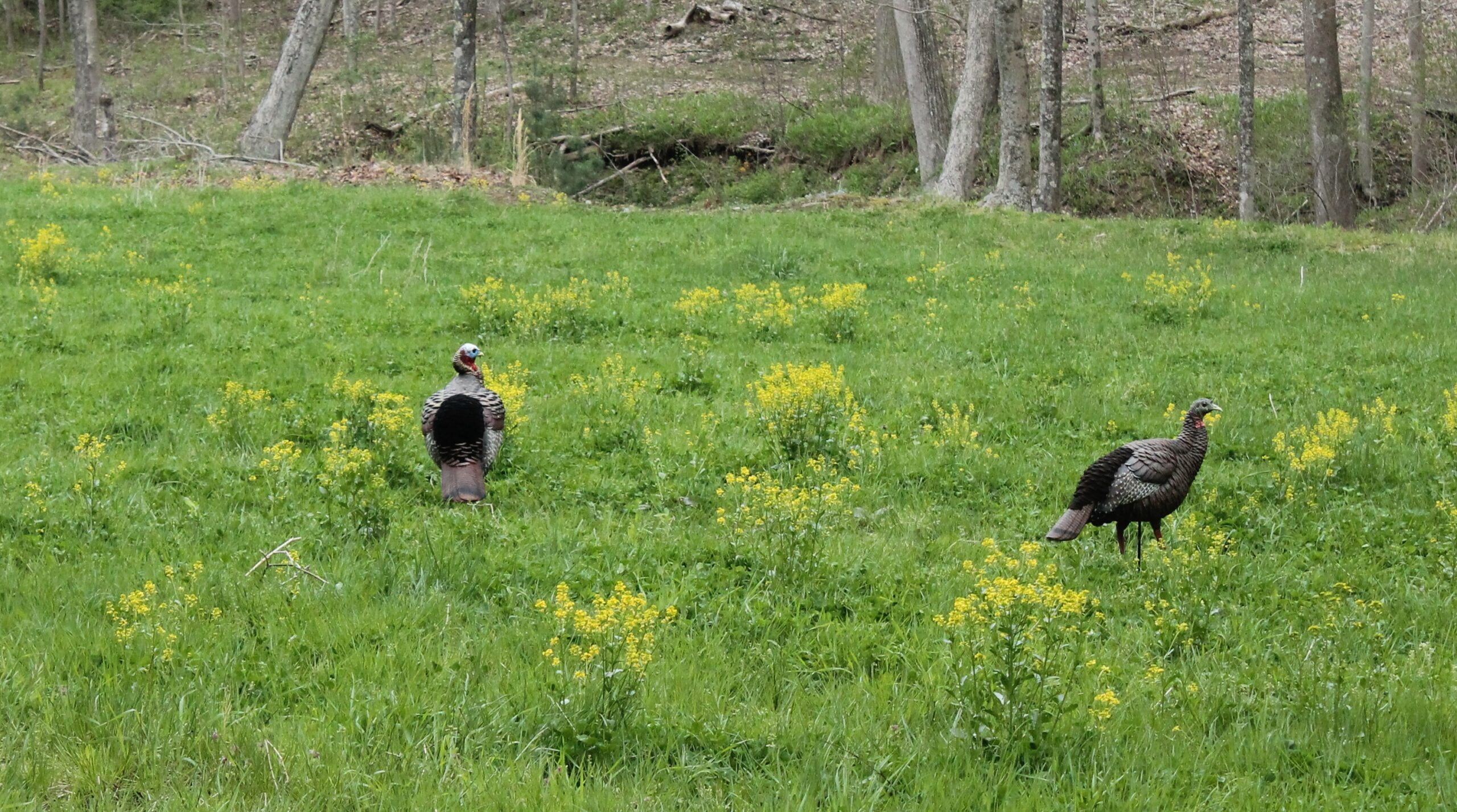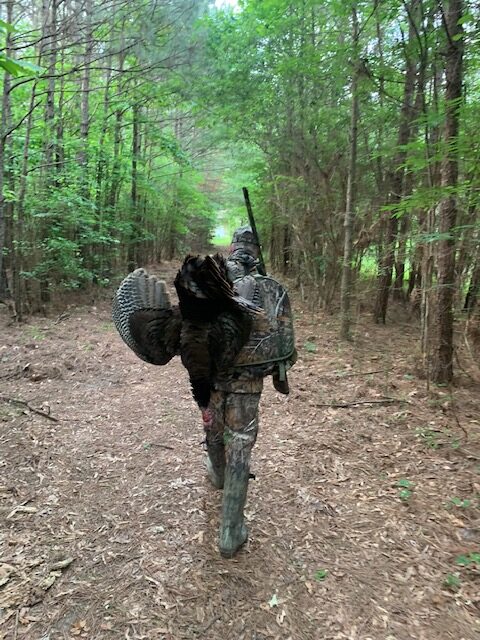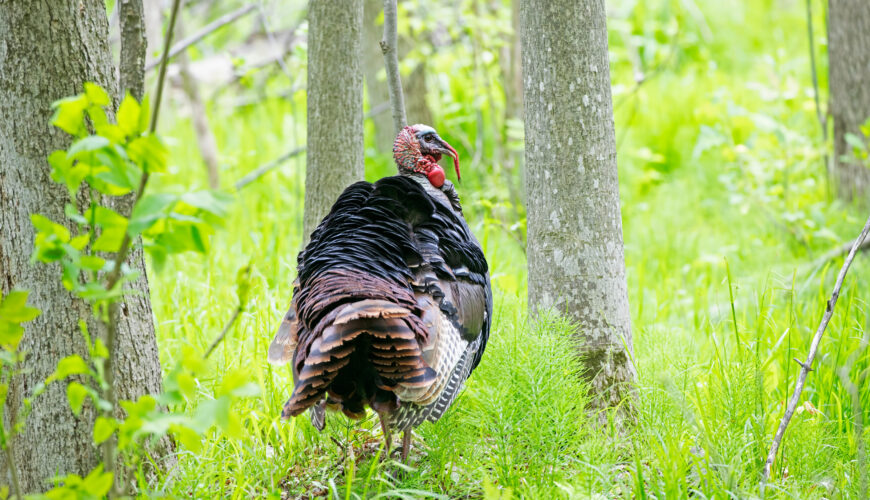Tactics
After The Shot: How to Blood Trail Your Deer
December 9, 2025 •Doug Howlett
May 15, 2025
By the time late season rolls around, most turkey hunters are either tagged out, burned out or the gobbling action is dying down and it’s hard to get excited about setting the alarm. (Believe me, I’m there on the last one!) But that’s good news for you—because fewer boot tracks in the woods can mean more opportunity, if you’re willing to grind it out to the finish.
Late-season birds have seen it all: every box call in the truck, every decoy you can buy and every hunter who thinks he can competition call a wary gobbler like it’s still opening morning. Even on lands only you hunt, as light as you may have gone, the birds are still feeling the pressure. Ultimately, they are paranoid, the breeding action is dying out so their motivation for finding a hen isn’t so keen and like you may be getting, they are flat-out done with the game. But don’t throw in the towel yet. You can still punch that tag.
Here’s how to finish strong when the clock’s running out.
Late-season gobblers may not gobble much on the roost, and they may not even say a word when they hit the ground—but they are still thinking about those last few hens. In fact, reports up and down the East Coast have been in many areas, even up to the final days, a lot of them are still with hens. The trick is knowing where they go to strut once they’re alone and wanting company. Open logging roads, ridge spines and field corners with dust bowls and fresh tracks are your best bets. Birds will drift in mid to late morning, dragging their wings and hoping a hen finds them. Get in before they do and be waiting with a few soft yelps. If you’ve found a strut zone with fresh sign, don’t overthink it—just get comfortable and let the birds come to you. A lone hen decoy may add a little attraction to the area. (See the next tip.)

When it comes to decoys, buy the most realistic ones you can. It can make a difference. Doug Howlett Photo
At this point in the season, you’re not dealing with rookies. In public areas or club lands, gobblers have been seen enough plastic hens to start questioning reality. If you’re going to use decoys, make them count. Full-body, flock-style setups might’ve worked in April, but now, stick with a single realistic hen, positioned naturally—either feeding or standing alert. Don’t set her too close, but then not too far away either. I like 20 to 25 yards max. A jake and hen combo can still work wonders unless jakes have been ganging up on your toms. Either way, a wary tom may hang up at 40 yards trying to pick things apart. Give him space to commit. In heavily pressured areas, skip the decoy altogether and rely on sound and position. Some of the best late-season kills happen with no visuals at all—just a perfectly timed cluck and a bird sneaking in quiet.
Late-season gobblers aren’t just call-shy—they’re smart. Instead of trying to talk them into making a mistake, play their routine against them. Pattern the bird. Figure out where he likes to loaf midday, or which logging roads he may use to cut from field to field. Then get in there, ahead of time and silently sit tight. Ambush hunting might not be glamorous. In fact, it can be downright boring. But it also works. If you’ve got a field edge a tom visits every afternoon or a ridge he likes to strut in, you don’t need him to gobble. You just need to be there first. This is a great scenario for a pop-up blind where you can set a nice hunting chair inside, get comfortable, get away with a little movement when needed and wait things out. Don’t be afraid to leave the calls in your vest and let your scouting do the talking. A call now could be akin to an alarm putt and send him slipping the other way.
Sometimes, the smartest call you can make is no call at all. Late in the season, hens get quiet—and so should you. If you’ve already located a gobbler but he’s not closing the distance, shut it down. Let silence create curiosity. That longbeard might circle, poke around and eventually wander in just to figure out where that hen went. This tactic is especially deadly in tight cover or over ridges where birds can’t see the source of the sound. A lot of birds have died after 30 minutes to an hour of nothing. Be patient and have confidence in the long game. I can’t tell you the times I’ve called to a roosted bird in the morning, had him go the other way and then after I’ve already moved out of the area, heard him gobbling around mid or late morning from that same spot I had called from earlier. It’s then I kick myself for not taking my own advice.
You should’ve been doing this the entire season, but if you haven’t, definitely do it now. The birds are edgy, and if you’re stomping through the woods every morning trying to get tight to them on the roost or marching through woods where they like to loaf as the day gets hot, you’re probably hurting your odds more than helping them. Now’s the time to ease off the gas. Use binoculars to scan large fields from the cover of the forest. Get atop open hills and ridges and scan the area while keeping low to the ground. Slip in before daylight and just listen—don’t owl hoot, don’t crow call. Listen for scratching, wing flaps and soft tree yelps. Learn where he is going once down from the roost, not just where he is on the roost. Then slide in on him like the assassin you are.

Persistence can pay off as it gets to the final days of the season. Doug Howlett Photo
Late-season birds are like late-season bucks—you’re working for a shot, not a show. If a gobbler fires once and goes quiet, he’s not ignoring you. He’s probably coming. If he skirts 70 yards away because your decoy’s too close or the sun caught your movement, you take that lesson to the next setup. Stay sharp, stay humble, and remember that a bird killed in the last three days of the season took more skill and patience than three opening day toms put together.
As I write this, an afternoon thunderstorm is rocking. It’s the time of year such storms are pretty common. I had planned to be sitting on a field edge near where I expect a bird to return to roost, but the driving rain and lightning convinced me otherwise. But I’ve got my camo on and the gun and gear are by the door ready to go. If it lets up soon enough before dark, these birds are going to push into the safety of the open fields to avoid the darkening woods and all the movement from dripping rain drops. They can’t hear anything walking up on them in wet leaves any better than you can. So, they’ll linger in the fields and I just need one looking for company before he flies up to call to the gun. Use these stormy days to your advantage to catch a turkey in the open, then use the terrain or cover of trees to get in position the way a tom is heading. If he’s naturally working your way, keep silent. If it seems he needs some enticement, offer up enough soft yelps and purrs to pique his interest, then shut up. Overcalling typically won’t work here. Just let him work your way in his own time and then fill that tag and celebrate yourself for another successful season.
